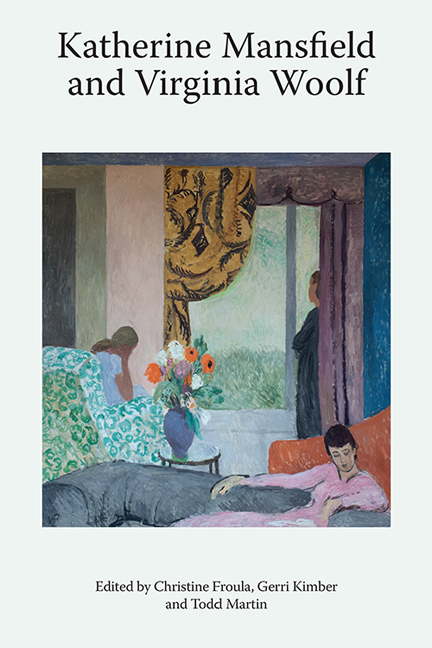The Point of ‘Slater’s Pins’: An Introduction
Published online by Cambridge University Press: 07 May 2021
Summary
Virginia Woolf first published the short story ‘“Slater's Pins Have No Points”’ in Forum, an American magazine, in January 1928. An earlier version with variants appeared posthumously as ‘Moments of Being: A Story’ in the May 1941 issue of the American monthly Decision and as ‘Moments of Being: “Slater's Pins Have No Points”’ in her 1944 short story collection, A Haunted House. The story has its origins in an offhand comment made by Clara Pater, sister of Walter Pater and Woolf's tutor in Greek. As she revised To the Lighthouse, Woolf noted, ‘As usual, side stories are sprouting in great variety as I wind this up: a book of characters; the whole string being pulled out from some simple sentence, like Clara Pater's “Don't you find that Barker's pins have no points to them?”’ (VWD3, p. 106). This ‘nice little story about Sapphism, for the Americans’, as Woolf characterises it in a postscript to a letter to Vita Sackville-West of 15 July 1927 (VWL3, p. 397), encompasses several striking themes of Woolf's fiction: queer desire, telescoping temporality, and, most relevant for a stage adaptation, a moment of dramatic singularity – a moment of being – that is simultaneously corporeal and transcendent.
This ‘nice little story’ manifests in fiction what Woolf describes as ‘moments of being’: those ineffable instances in which sensory experience and psychic awareness coalesce into an intense and memorable feeling of ‘ecstasy’ or ‘rapture’. In this respect, the story's emergence as Woolf completed To the Lighthouse merits examination. Christine Froula describes To the Lighthouse as Lily Briscoe's ‘quest for the thing itself’, the ‘realities beneath appearances’, the truth that evades capture. Lily Briscoe attempts in her painting to scrape away the extraneous data accumulated after long acquaintance with the Ramsays and reveal a true picture, ‘whole and clear’. In ‘“Slater's Pins Have No Points”’, Fanny Wilmot, too, is trying to arrive at a whole and clear picture of Miss Craye, but, unlike Lily, she has only scraps of information to piece together. This is a story with very little data and almost no action. Fanny knows little about Miss Craye beyond small talk during her lessons and gossip from Miss Kingston, the head of the music school.
- Type
- Chapter
- Information
- Katherine Mansfield and Virginia Woolf , pp. 155 - 157Publisher: Edinburgh University PressPrint publication year: 2018



